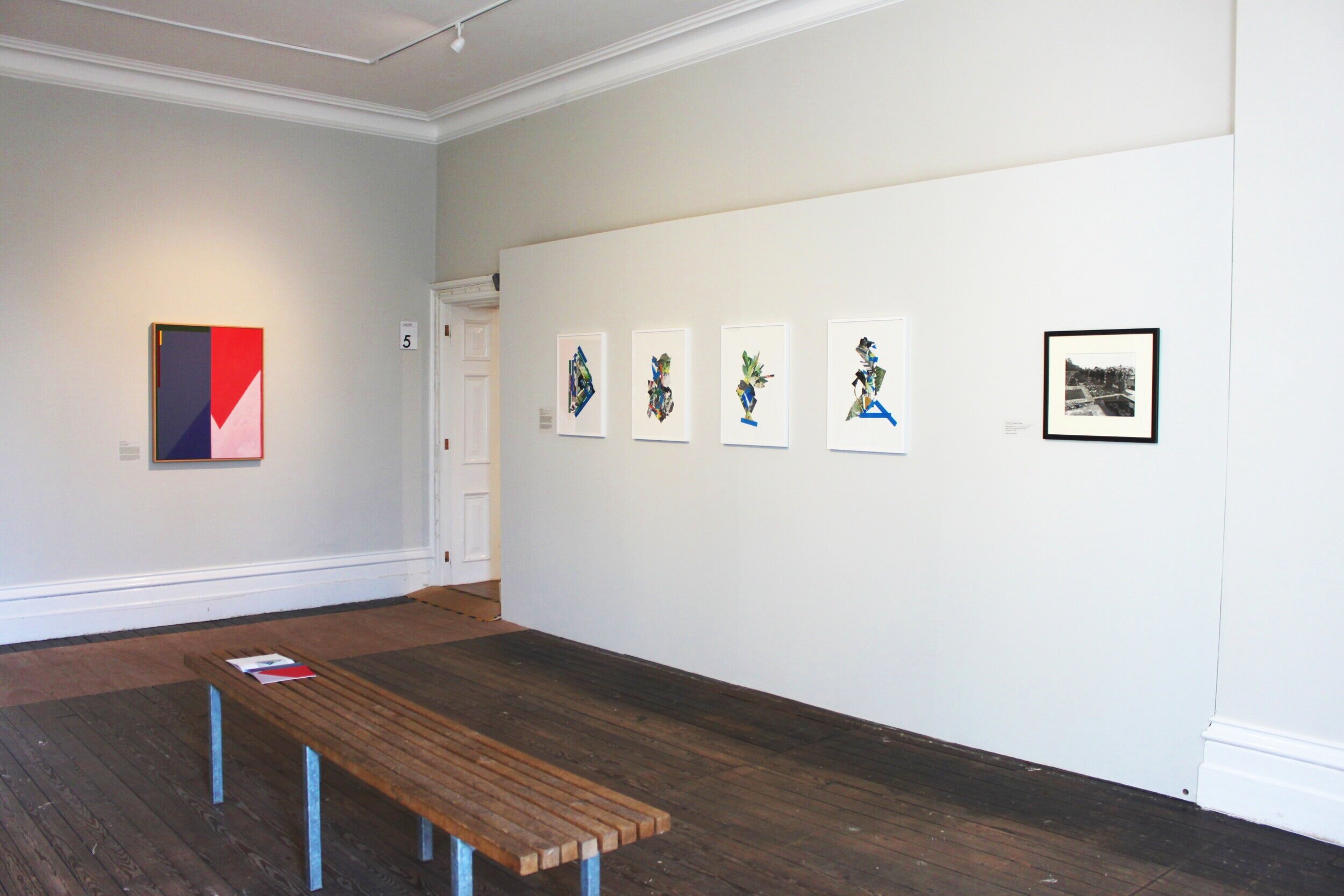To Propagate: To Graft
Reclaimed wood, reclaimed house-paint, varnish and steel
190 x 60 x 40 cm
2023
Installed at Hestercombe House and Gardens.
This work tests out a new way of working, a material process that allows for reclaimed wood to be used again and again regardless of its size, using small fragments or larger pieces. By collaging together reclaimed wood and laminating it, the grain becomes the detail and its history is revealed like a palimpsest. The sculpture takes on a plant like form drawing the eye up to the much larger trees above it. It becomes ambiguous in scale and size becomes infinite, it could be a model for a larger public sculpture or architectural work. The work aims to reference ideas of piecing together fragments of the world around. It takes inspiration from the natural world, the cutting taken to propagate a plant and the grafting of trees to make new species. The work has been made with every stage of the process questioning ways to make it more sustainable from the sourcing of material to the install method. This process makes connection to the way grafting’s purpose is to combine one plant's qualities of flowering or fruiting with the roots of another that offers vigour and resilience. As such it becomes a way of making sculpture which has less of a carbon footprint and allows for it to be cut up and reshaped. It aims to act as a way to question what it means to have a material practice in the context of climate change and to offer ideas for how to rethink our relationship to materials and to plants and trees in the context of climate change.
Waiting for the Natural to be Turned On
Digital Projection
2021
Waiting for the Natural to be Turned On is part of an ongoing body of work that considers the human relationship with nature, how it is domesticated and how it is everywhere, even in the most urban of spaces.
This work takes its starting point from the painting The Great Cascade at Hestercombe by Bampfylde, 1762 and another image from the archives at Hestercombe where a group of spectators await the turning back on of the waterfall. This spatial projection aims to ask the viewer to question their perception of nature and knowledge of what is truly natural. Human intervention is everywhere and there is so little that is purely natural. Landscape is formed from human interaction and the traces of them are everywhere. This work is visual journey which layers and collages together footage of plants and water from within the gardens and intertwining materials found in the studio and architectural spaces. This work highlights the similarities between the way we build and adapt as humans to how nature grows and evolves. Handmade collages are woven into the imagery and the footage goes in and out of focus.
The work also draws from the history of framing within gardens used as a device to draw the viewer to the next vantage point. The projection intended to be viewed from in-front references theatrical sets and landscape painting. Throughout the work there are reoccurring shots that incorporate perforations and geometry to frame and obscure the view. It is intended to be hypnotic and disorienting to suggest that we can find balance within the fragmentation of our experiences and memories of spaces we spend time within in real life and with amidst the abundance of digital media we swim through every day.
Adaptation
2020
Mono-print collage
59.4 x 42 cm
As part of this ongoing research project Sally Stenton and Susie Olczak led a series of workshops at, the first was for the Royal College of Art and then a public workshop called How To Live Together which invited the non-human (plants) into the process of making-together with participants.
Liquid Landscapes
2021
Cyanotypes, screen-prints, digital photographs and tape
59.4 x 42 cm
These works took the planting plans from the archive at Hestercombe as their starting point and across the series they fragment, grow and adapt. The works sit between abstracted botanic drawings, architectural plans for new constructions for the future, where plant life intertwines with the urban, microscopic views of crystalline structures and laboratory specimens. They refer to maps or cosmic views through the telescope or the telescopic image itself. Scale is intended to be ambiguous. The works layer up images taken from the gardens of Hestercombe alongside, cyanotypes produced within the gardens using plants that had fallen on the ground- sealing the photographic reaction within the bodies of water on site.
The works intend to ask questions about the artificiality of nature, about urban expectations of the natural and to offer an overall suggestion of ideas of adaptation, of nature's ability to thrive, especially when nurtured. They intend to offer a positive outlook that nature will continue to evolve despite the increasing difficulties in relation to climate change.





